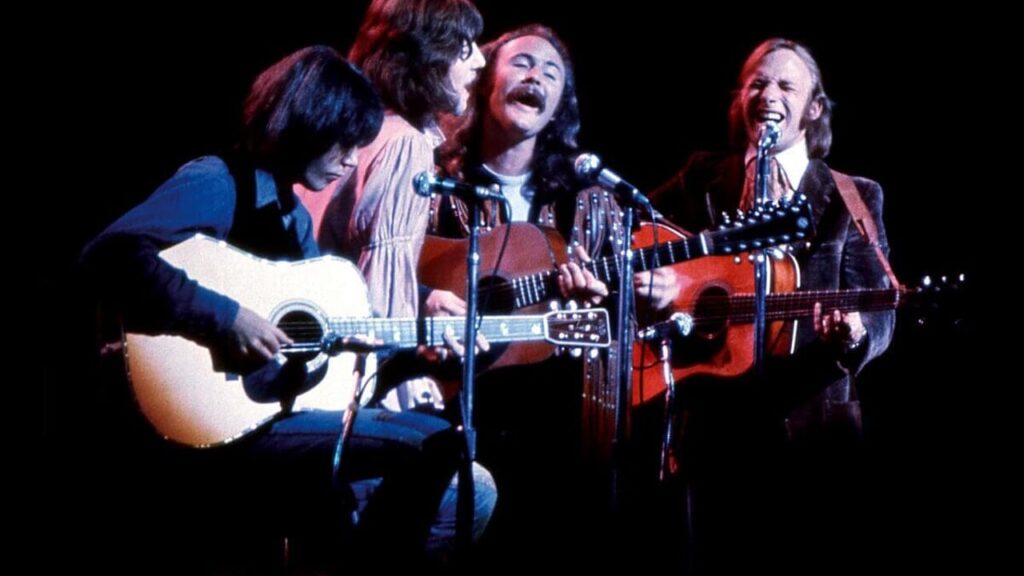
A Cry of Outrage and Mourning That Echoes Across Generations
Released in June 1970, “Ohio” by Crosby, Stills, Nash & Young is not merely a protest song—it is an urgent lament carved into the soul of American history. Just weeks after the Kent State shootings on May 4, 1970, in which four unarmed college students were killed by National Guardsmen during a Vietnam War protest, this raw, defiant track was written by Neil Young, recorded with a burning immediacy, and released as a stand-alone single. Though it was not included on a studio album at the time, it climbed to No. 14 on the Billboard Hot 100 and became an indelible part of the group’s legacy—later appearing on compilations like Decade and So Far. The song remains one of the most emotionally searing responses to political violence ever pressed into vinyl.
“Ohio” was born not in a studio boardroom or record label meeting, but in a moment of stunned national grief. Upon seeing the harrowing photographs of the Kent State massacre in Life magazine, Neil Young reportedly penned the lyrics in a burst of anguish and fury. The very next day, the group gathered to record the song at Record Plant Studios in Los Angeles. What emerged was not just music—it was testimony. From Young’s tremulous voice lamenting “Tin soldiers and Nixon’s coming” to David Crosby’s audible sobbing during live performances, “Ohio” strips away pretense and delivers raw emotional truth with every note.
Musically, the song is as unvarnished as its message. The opening guitar riff is lean yet piercing—a staccato wake-up call that cuts through complacency. The rhythm section marches with solemn insistence while Stephen Stills’ harmonies cradle Young’s vocals like mourners around a casket. And then there are the lyrics—simple yet devastating: “What if you knew her and found her dead on the ground?” It is not just rhetoric; it is confrontation. It forces us to look directly at the cost of political power wielded without accountability.
The power of “Ohio” lies in its refusal to allow forgetfulness. It stands in opposition to historical amnesia, insisting that names—Allison Krause, Jeffrey Miller, Sandra Scheuer, William Knox Schroeder—be remembered not as casualties of unrest but as victims of injustice. In its time, it was banned from some AM radio stations for its blunt criticism of President Nixon—a testament to its disruptive power—but it thrived nonetheless through underground channels and FM broadcasts that understood what art must sometimes do: disturb comfort and comfort the disturbed.
Over half a century later, “Ohio” still resonates—not only as a document of its era but as an eternal cry against violence cloaked in authority. It reminds us that music can be more than accompaniment to history—it can be its conscience.